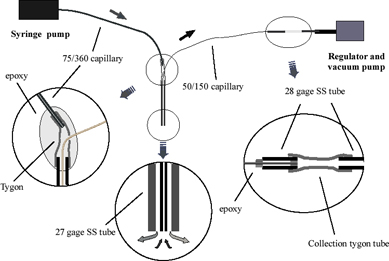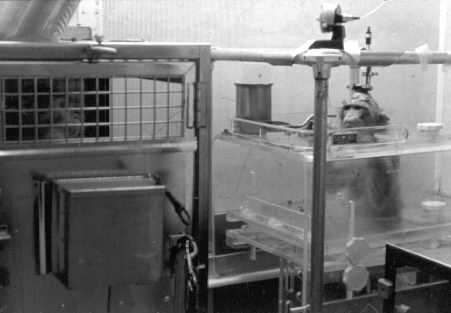Oversight
Oversight
Whenever a conversation ensues about the UW's use of animals in its labs, one very common question or assertion, depending on who is involved in the conversation, is the issue of oversight. Aren't the experiments regulated? The experiments are highly regulated!
First, consider what the primate center has to say about this topic:
Center research projects are reviewed at many regulatory levels to insure conformity with the Animal Welfare Act, the USDA Guide for the Humane Care and Use of Laboratory Animals, and NIH research protocols. The Graduate School, including the Primate Center, is fully accredited by the American Association for the Accreditation of Laboratory Animal Care –International (AAALAC-I).
http://www.primate.wisc.edu/wprc/pdfs/Main.pdf
AAALAC-I accreditation is claimed to be the "gold standard" of accreditation -- by the laboratories AAALAC certified. But history suggests that AAALAC accreditation amounts to little more than just another smokescreen. The actual value of AAALAC accreditation is illustrated by the situation at the University of Florida.
The University of Florida has been AAALAC accredited since 1966 according to an article in the Sunday, March 26, 2000 Gainesville Sun. In spite of this, dire conditions within the University of Florida's laboratories led to repeated complaints by senior staff that eventually led to the removal of the university's director of Animal Resources. The Associate Director of Animal Resources is quoted as saying, "This information, if put in the public domain, will do much more than expose a poorly run laboratory animal medicine program, it will be used to show what the real 'behind the scenes' may look like in our modern biomedical research facility."
And consider what UW spokesperson's say about their own oversight:
Once a study begins, care is provided every day to animals by specially-trained scientists, veterinarians, technicians and animal caretakers who assume stewardship of the animals under their care. (UW researcher, Wisconsin State Journal , 4/23/05)
On paper, in the spin-zone, it sounds so very reassuring. The reality is otherwise.
One recent illuminating example of the real effects of this oversight is the situation concerning senior scientist Ei Terasawa's seventeen years of push-pull perfusion experiments on awake monkeys' brains.
Here's what she has to say:
Push-pull perfusion
Before push-pull perfusion experiments, monkeys were stereotaxically implanted with a stainless steel cranial pedestal (200 mm od) under halothane anesthesia, as described previously. This pedestal was aligned dorsoventrally with the infundibular recess of the third ventricle using an x-ray ventriculogram obtained after ventricular injection of a radioopaque dye (iohexol). The pedestal was then fixed to the skull with surgical bolts and dental acrylic. Monkeys were allowed at least 4 weeks to recover and were gradually adapted to a primate chair, the experimental environment, and the presence of the researchers.
Three days before each push-pull perfusion experiment, the monkey was anesthetized with 10 mg/kg BW ketamine hydrochloride (Bristol Laboratories, Syracuse, NY) and placed in a stereotaxic apparatus (Model 1504, David Kopf, Tujunga, CA). A hydraulic microdrive unit (model MO95-B, Narishige, Tokyo, Japan), allowing precise three-dimensional adjustment, was used to insert an outer cannula (20 gauge, 0.80 mm od) with an inner stylet (27 gauge, 0.42 mm od) into the S-ME.
MO-95 - Single-Axis Oil Hydraulic Fine Microdrive Micromanipulator (Skull Mounting)
MO-95: $4,324.32 - Ships in 3-5 daysAs described previously, accurate placement of the cannula was confirmed using x-rays that were compared with the ventriculogram obtained earlier. The location of the outer cannula tip, relative to the ventral tip of the third ventricle, was similar for each of the groups in the two experiments of this study. After cannula placement, monkeys were placed in a primate chair for 3 days. [Our emphasis.] The procedure does not induce stress, judged from cortisol levels and behaviors, given that monkeys were well adapted to primate chairs before this study.
Push-pull perfusion was performed three days after insertion of the outer cannula. The stylet was replaced with an inner cannula (29 gauge, 0.32 mm od), through which modified Krebs-Ringer phosphate buffer solution (aCSF, pH 7.4) with bacitracin (4 U/ml) was infused at 20 µl/min with a peristaltic pump. Ten-minute fractions were collected continuously in polypropylene vials on ice, immediately frozen on dry ice, and stored at -20 C. Perfusions were begun at 0700 h–0800 h and continued for 10–12 h. After the experiment, the monkeys were returned to their home cages to rest for at least 1 month before the next push-pull perfusion. [From Claypool LE, Kasuya E, Saitoh Y, Marzban F, Terasawa E. N-methyl D,L-aspartate induces the release of luteinizing hormone-releasing hormone in the prepubertal and pubertal female rhesus monkey as measured by in vivo push-pull perfusion in the stalk-median eminence. Endocrinology. 2000 Jan;141(1):219-28. http://endo.endojournals.org/cgi/content/full/141/1/219]


From http://www.awionline.org/lab_animals/rhesus/Photo.htm
Now consider the spin after we publicly disclosed that USDA inspectors had discovered that monkeys were being left alone, unobserved, and dying while strapped into the chair while the pumps pushed and pulled the chemicals from their brains:
"This is evidence of the process of oversight working,” Sandgren said of Terasawa's research. “We investigated, we determined a particular procedure was too risky and could no longer be performed at all.” [UW monkey deaths during experiments raise questions. Researcher suspended in 2004. Capital Times (web edition). August 16, 2005.]
Eric Sandgren is the Chair of two of the UW's oversight committees, and so, is directly responsible for the failure of the university to constrain Terasawa. It would be too easy to claim that the oversight committees had simply overlooked this senior scientist's research for seventeen years. And, in either case, the notion that the oversight, the regulations, or the staff act to limit the research, are aware of the horrors occurring in the labs, or care one way or the other, is fraught with problems.
For more on Terasawa, see: http://www.primatefreedom.com/uwbustedbyusda.html
And the United States Department of Agriculture Inspector General's office says that oversight in the nation's labs is failing to enforce even the minimal requirements of the Animal Welfare Act.
USDA oversight problems : 10/20/2005 - APHIS Animal Care Program Inspection and Enforcement Activities http://www.usda.gov/oig/webdocs/33002-03-SF.pdf
Any and every claim that research using animals at the UW is monitored and regulated in a manner that assures humane care is pure propaganda.
Consider the case of Dr. Jennifer Hess: “Money flows over monkey woes.”
Consider the cows who died of malnutrition, the monkeys who have been scalded to death in the cage washers, Ei Terasawa's seventeen year study, all of these cases resulted directly from a lax or unconcerned level of oversight.
And, similar problems occur regularly around the country. The animal research culture is understandably numb to the animals' suffering. Claims made by them must be considered in light of their willingness to hurt animals on a daily basis.
Finally, the university is required by federal regulation to submit a report documenting the number of animals used on campus to the USDA. (This includes only members of the AWA-covered species.) The WPRC reports here that they have about 1480 monkeys. The Harlow lab reports here that they have about 500 monkeys on hand. These numbers have been fairly stable over the past few years.
So why, in the university's 2004 Annual Report to the USDA*, does the university claim to have 1313 monkeys? Who can't count? The federal government, or the monkey lab workers?
*Public access to this and similar documents has been increasingly curtailed over the past few years. In spite of the fact that it is a public document by every meaning of the term, it would have taken years to obtain through "normal" channels.
Madison's Hidden Monkeys is a joint project of the
Alliance for Animals and the
Primate Freedom Project
